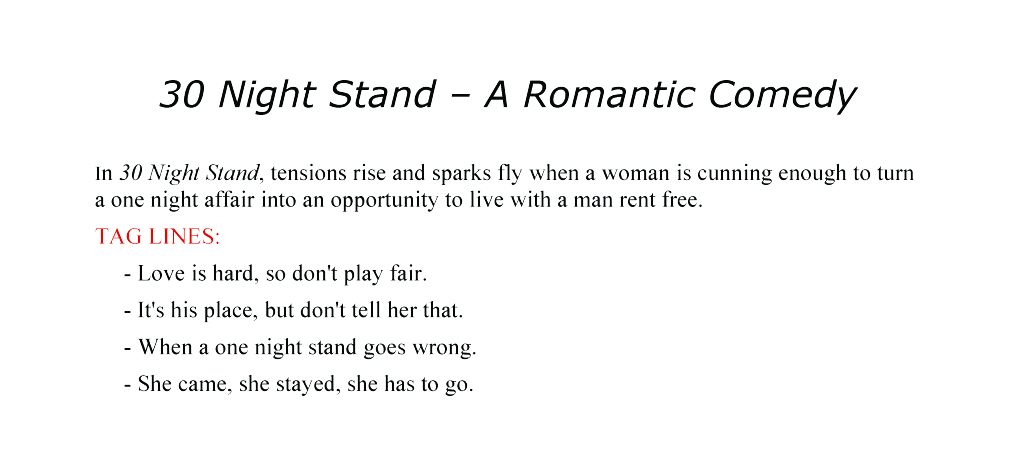

But the best log lines are usually written AFTER the movie is finished. Log lines help to focus the filmmaking team as they moves through the process of writing, development, attachment, production, and then marketing. Log lines, as I said above, are the place that writers start.

While the log line describes the PHYSICAL essence of the story, the moral premise statement describes the inner working, or the PSYCHOLOGICAL essence of the story. Having written the book The Moral Premise, it’s only fitting that I reference it here. You do know what a rewrite is, don’t you? As formulistic as all this sounds, expect to rewrite your log line many, many times - not necessarily at first, but over the time that you develop your story and script. What it doesn’t sound right? Then, rewrite it. Now, take all those elements and put them into a compelling sentence in this order: Struggle, battle, contends, wrestles, grapples, scuffles, fights, wages war, jousts, duels, spars, scraps, opposes, takes on, clashes, quarrels, feuds, or crusades. Thus, the log line verb should be one of the following, or one like them that best suits the genre: After all this is a movie, not a play or a novel.


The verb you choose to depict the struggle must be visual and active. And the direct object will describe (3) an insurmountable ANTAGONIST who tries to stop the protagonist from reaching (4) a physical GOAL on account of (5) the STAKES, if the goal is not reached.įinally, the log line is even better if the words chosen in its writing can enhance the story's marketability by suggesting the movie’s: The subject of the sentence will describe (1) an imperfect but passionate and active PROTAGONIST. And, if we get lost, a good log line will lead us back to the beginning where we can start again.įundamentally, a good log line will be a single sentence that will include five elements. A good log line tells us how far we need to go before we arrive at a turning point in the plot. Log lines are a necessary tool that keeps us focused in writing our story, and helps convince “names” to spend their time and money to get our story made and distributed. They also help to steer funding and attachments to our projects. It’s the lie that tells the truth - about the importance of log lines. Now, if that last part in brackets sounds like a joke, it wasn’t intended as such for the writers reading this. It told them how far they had gone in a certain direction and when to turn the boat to find their destination. The marina’s log line was a necessity in helping them navigate their journey and not get lost. They counted how many evenly spaced knots passed through their hand as the sand in the hour-glass drained from the top to the bottom. Originally, log lines were long thin ropes on a spool with knots tied in them that mariners unreeled behind their ships to measure their speed – in KNOTS. So, I needed an easy to remember formula that worked. I’m always having to come up with them, or help others figure them out – the log lines, not the groceries. If not for the story I’m currently working on, then to explain to my wife what I did all day long at home while she was off earning money to pay for our groceries. Our goal: a strong, pithy pitch for a movie that will keep you focused as a writer and get your audience into the theater.īecause I teach, consult, write, and direct, I am always in desperate need of a good log line. This is the last article you’ll ever need to read on log lines.


 0 kommentar(er)
0 kommentar(er)
